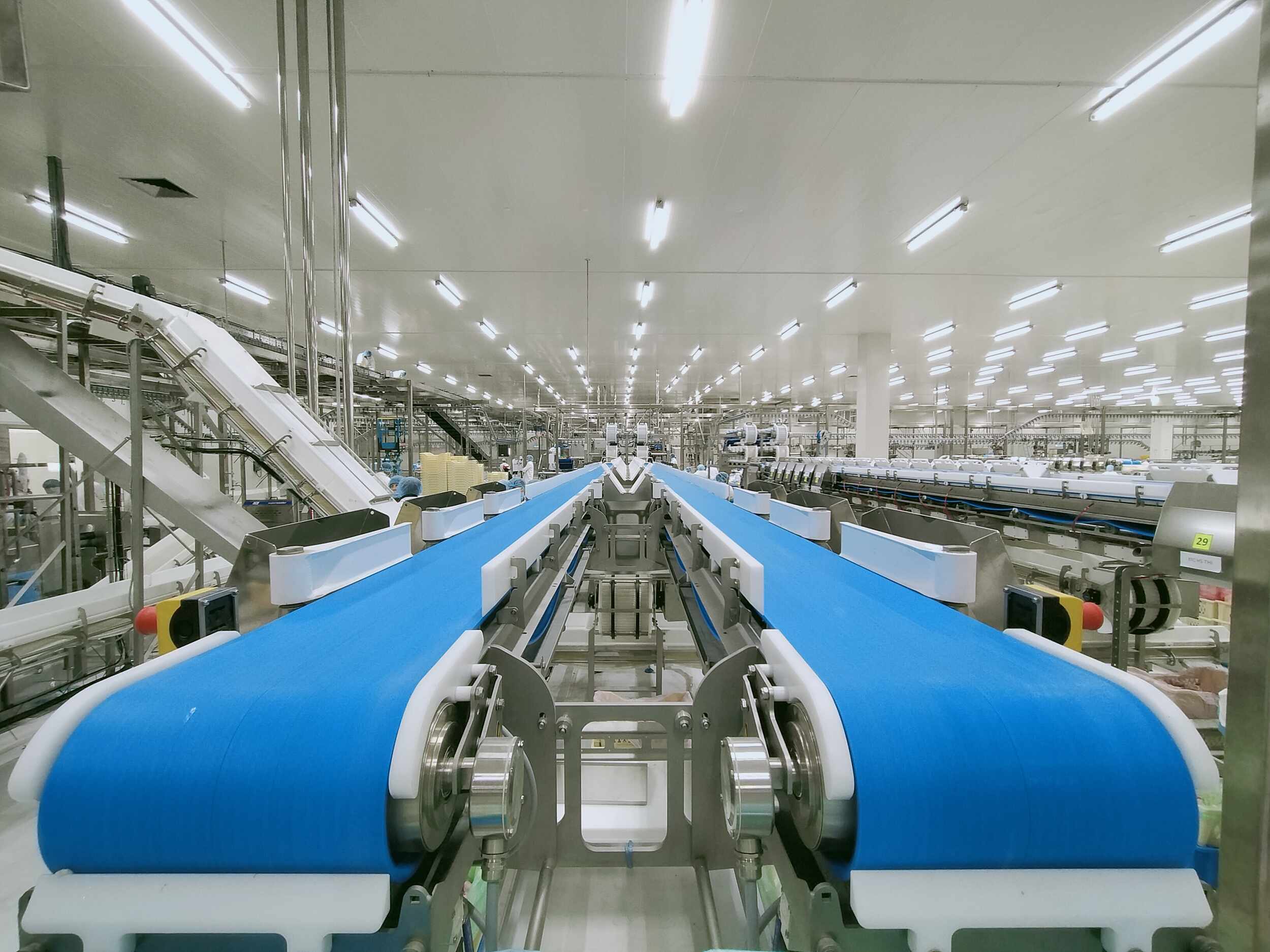Conveyor belts are an integral part of countless industries, enabling the efficient transportation of bulk materials from one location to another. With such a wide range of applications and needs, it’s crucial to understand the different types of conveyor belts and their specific purposes to ensure a smooth-running operation.
In this comprehensive guide, we will dive into the details of various conveyor belt type, their specific applications, and essential maintenance tips to help you optimise your conveyor system for maximal operational success.
1. Flat Belts: A Versatile Choice for Numerous Industries
Flat belts are among the most common types of conveyor belts, given their simplicity and versatility. These belts can be made of various materials, such as PVC, rubber, or polyurethane, and typically consist of a continuous loop running over two or more pulleys. Their smooth, flat surface makes them ideal for applications requiring high-speed operation and relatively light loads.
Industries that frequently use flat belts include packaging facilities, distribution centres, and manufacturing assembly lines. They’re particularly suited to tasks that require moving products from one point to another in a straight line, such as loading and unloading items onto transport vehicles or transferring them between different stages of processing.
2. Modular Belts: A Clean and Efficient Solution for the Food Industry
Modular belts, also known as plastic modular belts or modular plastic belting, are made from individual, interlocking plastic segments. The unique design of modular belts allows for easy cleaning and maintenance, making them a popular choice for industries that place importance on hygiene and sanitation, such as food and beverage manufacturing.
Apart from being easy to clean, modular belts offer several other advantages over traditional flat belts. For example, they display better resistance against wear and tear, require less tension to operate effectively and are less likely to suffer from tracking issues. These factors contribute to a longer lifespan and lower maintenance costs, making modular belts a cost-effective solution for many applications.
3. Steel Belts: The Heavy-Duty Answer for Challenging Environments
Steel belts, or steel conveyor belts, are a robust and resilient choice for demanding industries. These belts combine both durability and high load-bearing capacity, making them ideal for heavy-duty applications that involve extreme temperatures, abrasive materials, or exposure to chemicals. Steel belts are often made from stainless or carbon steel, with overlay options available to enhance wear resistance.
Mining, metallurgy, construction, and automotive manufacturing are some of the industries that frequently rely on steel belts for their conveyor systems. They are also used in industrial ovens and furnaces for heat treatment processes or in waste management for transporting and sorting large volumes of waste materials.
4. Cleated Belts: Preventing Spillage and Providing Precision
Cleated belts, also known as profiled belts or incline conveyor belts, are designed with raised cleats or profiles that help secure products on the belt during transportation. These cleats prevent items from slipping or falling off the belt, particularly when it’s moving on an incline or decline. Cleated belts are commonly used in applications that need precise product positioning or handling materials prone to spillage, such as bulk powders or granular substances.
The agricultural industry is a perfect example of an industry that benefits from cleated belts, as they’re used for transporting harvested crops and moving soil or fertilisers. Additionally, other industries that utilise cleated belts include recycling plants, aggregate processing, and food manufacturing.
5. Curved Belts: Navigating Obstacles and Saving Space
Curved conveyor belts are specifically designed to follow a curved path, enabling the transportation of materials around corners or obstacles. These belts can be found in distribution centres, where space constraints or complex routes necessitate winding paths, as well as in airports for handling luggage.
Curved belts offer a practical and efficient solution for materials handling over diverse routes without the need for additional conveyor systems or the use of additional equipment for product transfers. They are often implemented in complex facilities where there are limitations on space, making it essential to maximise both the conveyor system’s layout and its functionality.
Optimising Your Conveyor Belt System
Understanding the various types of conveyor belts and their specific applications is crucial to selecting the right belts for your operations. By investing in the appropriate conveyor belt system, you can improve operational efficiency, minimise downtime, and enhance the overall safety of your facility.
Regular inspections and maintenance of your conveyor belts can help you identify any signs of potential issues, such as wear and tear or damage. Deciding whether to repair or replace your belt can play a significant role in preventing costly disruptions and ensuring the longevity of your system. Ultimately, making the right choices in both selection and upkeep will contribute to a highly efficient and effective conveyor system better suited to meet the demands of your industry. That said, if you are looking for a good provider of quality conveyor belts, check out what we have at Change Parts Pty Ltd!




